Five years ago, in December 2015, the world held its breath. Would the nations of the world finally come together and agree a climate deal in Paris? Or would the negotiations fall apart, as they had, so crushingly and disappointingly, at Copenhagen in 2009? The Paris talks came very close to disintegrating at one point, but this time they did not break down and on 12th December, amid jubilant scenes, the Paris agreement was reached unanimously by the 197 countries of the United Nations.
This personal reflection has been written by Dr Elizabeth Perry, the Anglican Alliance’s Programme and Communication Manager.
Looking back
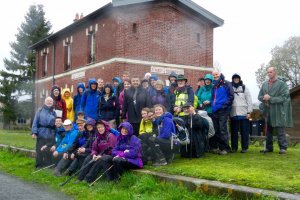 I had particular reason to watch these final agonising hours of the proceedings and cry with relief and joy when the moment of success was announced. Along with around 40 fellow pilgrims, I had set off on November 13th to walk the 200 miles from London to Paris ahead of the talks. I took part in the Pilgrimage to Paris because I wanted to “pray with my feet”, to walk in solidarity with people at the sharp end of climate change and to call on the leaders of the nations gathering there to take bold and decisive action to tackle climate change. The journey took just over two weeks. It was often hard going, we had very little privacy, we mostly slept on hall floors, it rained pretty much every day and it was very cold. But on our annual reunions, we often say the pilgrimage was the best thing we have ever done. For me, that’s not just because of the deep bonds of friendship that were forged, but because of what I experienced spiritually.
I had particular reason to watch these final agonising hours of the proceedings and cry with relief and joy when the moment of success was announced. Along with around 40 fellow pilgrims, I had set off on November 13th to walk the 200 miles from London to Paris ahead of the talks. I took part in the Pilgrimage to Paris because I wanted to “pray with my feet”, to walk in solidarity with people at the sharp end of climate change and to call on the leaders of the nations gathering there to take bold and decisive action to tackle climate change. The journey took just over two weeks. It was often hard going, we had very little privacy, we mostly slept on hall floors, it rained pretty much every day and it was very cold. But on our annual reunions, we often say the pilgrimage was the best thing we have ever done. For me, that’s not just because of the deep bonds of friendship that were forged, but because of what I experienced spiritually.
 I have rarely, if ever, felt such a strong sense of being caught up in the movement of the Holy Spirit. Prayer was at the heart of our pilgrimage and there was huge prayer coverage around the world for the Paris talks. I am not for a moment suggesting that my prayers were responsible for anything that happened, but there were such strong resonances between some of the positive outcomes of the summit and the specific things I, and others, had been praying for that it felt as though I had been allowed into the space where God’s Spirit was at work, that I had been caught up in a much bigger prayer and realm of activity that was both beyond and around me. It was an extraordinary experience.
I have rarely, if ever, felt such a strong sense of being caught up in the movement of the Holy Spirit. Prayer was at the heart of our pilgrimage and there was huge prayer coverage around the world for the Paris talks. I am not for a moment suggesting that my prayers were responsible for anything that happened, but there were such strong resonances between some of the positive outcomes of the summit and the specific things I, and others, had been praying for that it felt as though I had been allowed into the space where God’s Spirit was at work, that I had been caught up in a much bigger prayer and realm of activity that was both beyond and around me. It was an extraordinary experience.
The climate deal that was agreed in Paris was a remarkable achievement. Of course the agreement wasn’t perfect; of course there have been setbacks and disappointments since. Even so, Paris remains the moment when the world finally, as a whole, came together on climate change and “got it”.
Looking around
Today, I am increasingly troubled when I hear people say nothing is being done about climate change. It is both dispiriting and untrue.
 Five years on from Paris, I now work for the Anglican Alliance, which exists to connect, equip and inspire the worldwide Anglican family to work for a world free of poverty and injustice and to safeguard creation. I adore my job, not least because I get to see and hear about the myriad ways Anglicans across the Communion are living out their faith, including taking action to tackle climate change. So, for example, in Burundi, Kenya and Uganda Anglican churches are engaged in afforestation initiatives which will help mitigate climate change. Churches are helping people adapt to a changing climate: in the Pacific the Anglican Church of Melanesia is helping with food security and preparing people for relocation; in Sri Lanka, Zimbabwe and across the whole Anglican Communion, churches are engaged in building resilience to disasters. Churches are divesting from fossil fuels , adopting net zero targets and committing to Green Protocols, all of which will help prevent further climate change. And, of course, churches are always amongst the first responders when disasters hit and active in long term recovery.
Five years on from Paris, I now work for the Anglican Alliance, which exists to connect, equip and inspire the worldwide Anglican family to work for a world free of poverty and injustice and to safeguard creation. I adore my job, not least because I get to see and hear about the myriad ways Anglicans across the Communion are living out their faith, including taking action to tackle climate change. So, for example, in Burundi, Kenya and Uganda Anglican churches are engaged in afforestation initiatives which will help mitigate climate change. Churches are helping people adapt to a changing climate: in the Pacific the Anglican Church of Melanesia is helping with food security and preparing people for relocation; in Sri Lanka, Zimbabwe and across the whole Anglican Communion, churches are engaged in building resilience to disasters. Churches are divesting from fossil fuels , adopting net zero targets and committing to Green Protocols, all of which will help prevent further climate change. And, of course, churches are always amongst the first responders when disasters hit and active in long term recovery.
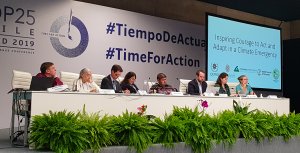 Last December, I had the privilege of going to the UN climate talks in Madrid (COP26). One of the side events was a panel discussion titled, “Inspiring Courage to Act and Adapt in a Climate Emergency”. The final speaker was Professor Elisabeth Holland, Professor of Climate Change at the University of the South Pacific who was a co-recipient of the 2007 Nobel Peace Prize for her contribution to the Intergovernmental Panel on Climate Change. After speaking from a scientific perspective, Professor Holland said, “I would like to tell you the story of what courage looks like in our youth in the Pacific”. And she went on to describe the work of young Anglicans in Tonga who had trained in disaster preparedness and response and rose to the challenge of putting their training into action when Tropical Cyclone Gita hit very shortly afterwards. A renowned climate scientist singled out young Anglicans as her source of inspiration.
Last December, I had the privilege of going to the UN climate talks in Madrid (COP26). One of the side events was a panel discussion titled, “Inspiring Courage to Act and Adapt in a Climate Emergency”. The final speaker was Professor Elisabeth Holland, Professor of Climate Change at the University of the South Pacific who was a co-recipient of the 2007 Nobel Peace Prize for her contribution to the Intergovernmental Panel on Climate Change. After speaking from a scientific perspective, Professor Holland said, “I would like to tell you the story of what courage looks like in our youth in the Pacific”. And she went on to describe the work of young Anglicans in Tonga who had trained in disaster preparedness and response and rose to the challenge of putting their training into action when Tropical Cyclone Gita hit very shortly afterwards. A renowned climate scientist singled out young Anglicans as her source of inspiration.
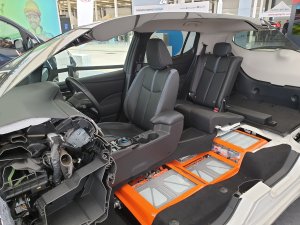 In a somewhat inverse example, my standout moment for hope and encouragement last year (other than what I see in my work) was a completely secular event. Fully Charged Live was a three-day festival of sustainable technology and innovation, which showcased the burgeoning range of electric vehicles and renewable ways of producing power, featured energy companies talking about how they are completely changing their business models and democratising energy production, and generally reimagining the future. It was exciting because the science and technology are advancing so fast and the costs falling dramatically. There is so much happening to be celebrated.
In a somewhat inverse example, my standout moment for hope and encouragement last year (other than what I see in my work) was a completely secular event. Fully Charged Live was a three-day festival of sustainable technology and innovation, which showcased the burgeoning range of electric vehicles and renewable ways of producing power, featured energy companies talking about how they are completely changing their business models and democratising energy production, and generally reimagining the future. It was exciting because the science and technology are advancing so fast and the costs falling dramatically. There is so much happening to be celebrated.
 The podcast Outrage and Optimism is another source of encouragement about the world’s progress towards meeting the ambitions of the Paris agreement. It is co-hosted by Christiana Figueres, who was the Executive Secretary of the United Nations Framework Convention on Climate Change from 2010 to 2016, and other members of the team who were key to the 2015 Paris Agreement. Recent episodes have discussed the future of fuels (episode 80), the future of flight (episode 74), taking dirty energy to court (episode 62) and faith, science and the climate crisis (episode 68). All very much worth listening to.
The podcast Outrage and Optimism is another source of encouragement about the world’s progress towards meeting the ambitions of the Paris agreement. It is co-hosted by Christiana Figueres, who was the Executive Secretary of the United Nations Framework Convention on Climate Change from 2010 to 2016, and other members of the team who were key to the 2015 Paris Agreement. Recent episodes have discussed the future of fuels (episode 80), the future of flight (episode 74), taking dirty energy to court (episode 62) and faith, science and the climate crisis (episode 68). All very much worth listening to.
Do these secular examples of innovation and hope mean that faith is not important in tackling climate change? Absolutely not. As Gus Speth has said, “I used to think that the top environmental problems were biodiversity loss, ecosystem collapse and climate change. I thought that thirty years of good science could address these problems. I was wrong. The top environmental problems are selfishness, greed and apathy, and to deal with these we need a cultural and spiritual transformation. And we scientists don’t know how to do that.” Gus Speth is a former chair of the UN Development Group, founder and president of the World Resources Institute, and a senior attorney and professor of law in the USA.
Looking ahead
There is a world of difference between nothing happening to tackle climate change and something happening, and I hope the examples above have shown that something – a lot, even – is indeed happening. But there is also a world of difference between something happening and enough happening. And, at the moment, we are not doing enough to address the enormity of the crisis we are facing.
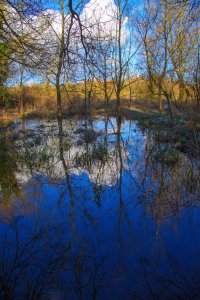 It seems to me that what we need more than anything is a heart-level change (or gut- or mind-level, depending on personality): to change the way we see the world and relate to it in our deepest being. We need that “spiritual and cultural transformation” that “scientists don’t know how to do”.
It seems to me that what we need more than anything is a heart-level change (or gut- or mind-level, depending on personality): to change the way we see the world and relate to it in our deepest being. We need that “spiritual and cultural transformation” that “scientists don’t know how to do”.
And this conversion is needed as much by Christians as by anyone else.
“How do you see the world?”
Nearly twenty years ago, I was challenged with the question, “how do you see the world?” It’s a good question and worth pondering. I realised I mostly saw the world as a backdrop to my life, something slightly separate, something I used for recreation, something I went in to, rather than something I felt intimately a part of and connected with. It was difficult to admit this, even to myself, but I suspect I am not alone, not least because of both my cultural upbringing and my particular theological inheritance. I live in a society whose wealth is derived from the industrial revolution and an economy based on extraction and exploitation, and I became a Christian in a faith tradition that placed greater emphasis on my eternal life and home than my present ones.
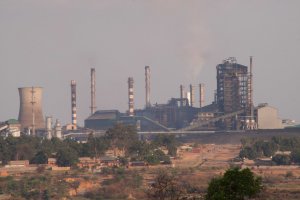
An extractive world view…
Unfortunately, this extractive world view was one shared by the missionaries who were part of colonial expansion and through them exported to other parts of the world, a point made during a recent webinar. “The form of Christianity that colonised abroad had a lot to do with the culture of the time,” one participant from Australia said. “It was not conducive to caring for the land”. A participant from Ghana agreed. “We treat creation as a commodity to be grabbed”, he said – an outlook that comes “from what western Christianity brought to us. We have to go back to our old theology”.
Thankfully, as that participant indicated, there are other world views within the global Body of Christ – and, more specifically, within the Anglican Communion. These alternative understandings are stunningly presented in a series of videos created for the Prophetic Indigenous Voices on the Planetary Crisis webinars.
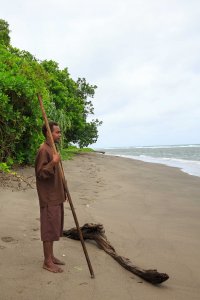 …or a relational world view?
…or a relational world view?
In the video from Aotearoa, New Zealand and Polynesia, contributors offered Indigenous theological reflections on the environment saying, “Indigenous Maori and Pacific peoples understand creation is inherently unified. There is a profound connection among all that exists with creation. Maori recognizes relationship as kaitiakitanga. …At the heart of the term kaitiakitanga is whanaungatanga (kinship) – the interrelatedness of all creatures within all species. Plants and birds, rivers, lakes and sea, mountains and hills, animals and insects all have value in themselves and are to be respected and honoured. In this way kaitiakitanga respects the mana (authority) of all living things and seeks to uphold all their mauri (vital essence) with tapu aroha and manaki (sacred love and care). …The concept of kaitiakitanga positions human beings in creation – not as supreme masters over the earth community but as interdependent members of the earth community. Perceiving ourselves as interdependent members of creation requires us to broaden our gaze beyond our anthropocentric concerns to include consideration of all living entities in everything we do.” The transcript of the whole theological reflection is provided at the end of this reflection (below the prayer).
The Prophetic Indigenous Voices offering from Africa shared similar theological wisdom. Rev Dr Kapya Kaoma from Zambia reflected, “The African world view sees humanity in relationship to the entire created order. Unlike in the West, the African world view has repeatedly pointed to the interconnectedness of humanity to the world of nature. Humans are part of nature. …I want us to see how the African world view can help reform our thinking, because until our thinking is reformed, this crisis will continue to haunt us. The most important thing we need to realise is what Africans realised centuries ago: that we live on this earth, but it does not belong to us.”
These are profoundly biblical ways of understanding the world.
The Earth, and everything in it, belongs to God and is loved by God
“The earth is the Lord’s and everything in it”, declares Psalm 24.
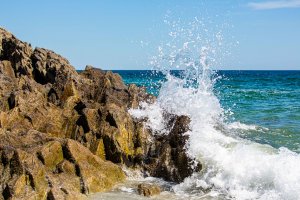
“Let the heavens rejoice, let the earth be glad;
let the sea resound, and all that is in it.
Let the fields be jubilant, and everything in them;
let all the trees of the forest sing for joy.
Let all creation rejoice before the Lord,” says Psalm 96: 11-13.
The Bible sees creation as something that God delights in for its own sake – something good and wonderful and beyond our ability to comprehend:
“The Lord said to Job,
Where were you when I laid out the Earth’s foundation… while the morning stars sang together and all the angels shouted for joy?
Have you entered into the springs of the sea, or walked in the recesses of the deep?
Have you entered the storehouses of the snow?
Can you bind the chains of the Pleiades, or loose the cords of Orion?
Do you know when the mountain goat gives birth?
Do you observe the calving of the deer?
Who let the wild donkey go free? Who untied its ropes? I gave it the wasteland as its home, the salt flats as its habitat. It laughs at the commotion in the town; it does not hear a driver’s shout. It ranges the hills for its pasture and searches for any green thing.”
From Job 38 and 39.
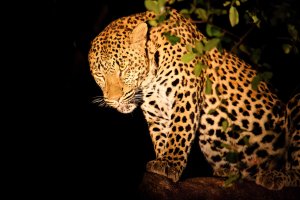 “The pages of the Bible are buzzing with insects, alive to the song of birds, majestic in their descriptions of trees and awesome in their appreciation of the strength of large animals. The Bible contains the names of countless species of trees and animals. There are thirteen different Hebrew words for owls alone and nine for locusts.” Martin and Margot Hodson in Cherishing the Earth, How to Care for God’s Creation.
“The pages of the Bible are buzzing with insects, alive to the song of birds, majestic in their descriptions of trees and awesome in their appreciation of the strength of large animals. The Bible contains the names of countless species of trees and animals. There are thirteen different Hebrew words for owls alone and nine for locusts.” Martin and Margot Hodson in Cherishing the Earth, How to Care for God’s Creation.
In the gospel narratives, Jesus is often found outdoors, fully at home in the natural world and relating to it. “Look at the birds of the air… consider how the wildflowers grow” he says. “The Kingdom of heaven” he says, “is like yeast … like a grain of mustard …like a man scattering seed …like a fishnet that was cast into the sea”.
Kinship and connection with God’s good earth, discerning, protecting and joining in creation’s song of praise and hearing her groans are deeply biblical ideas. We need so very much to turn away from (repent of) a mentality of extraction and embrace one of relationship.
Lessons from the COVID-19 pandemic
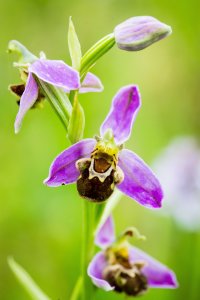 The COVID-19 pandemic has shown us how deeply interconnected we are; that we are “our brother’s keeper”; that our actions have far reaching consequences; that the people on whom society depends to function are people who are frequently undervalued and overlooked. This is true of both the human and other-than-human (a Maori term) world. Ruth Valerio and Gideon Heugh wrote earlier this year that, “As hard as it is to hear, the outbreak of coronavirus is not a ‘natural disaster’. It is a disaster of our own making. Viruses jump species and get into humans, and environmental destruction makes this more likely to happen as people are brought into closer contact with virus-carrying animals. Deforestation, mining, animal trafficking and unsustainable farming practices are all likely factors at play”. As Martin Hodson writes in the Grove booklet COVID-19: Environment, Justice and the Future, “ideology, short-term economic gain, politics, policies injustice, decisions and mistakes all contributed to the origins of the pandemic. Ignoring scientific and medical advice has proved a crucial factor at several points in this story”.
The COVID-19 pandemic has shown us how deeply interconnected we are; that we are “our brother’s keeper”; that our actions have far reaching consequences; that the people on whom society depends to function are people who are frequently undervalued and overlooked. This is true of both the human and other-than-human (a Maori term) world. Ruth Valerio and Gideon Heugh wrote earlier this year that, “As hard as it is to hear, the outbreak of coronavirus is not a ‘natural disaster’. It is a disaster of our own making. Viruses jump species and get into humans, and environmental destruction makes this more likely to happen as people are brought into closer contact with virus-carrying animals. Deforestation, mining, animal trafficking and unsustainable farming practices are all likely factors at play”. As Martin Hodson writes in the Grove booklet COVID-19: Environment, Justice and the Future, “ideology, short-term economic gain, politics, policies injustice, decisions and mistakes all contributed to the origins of the pandemic. Ignoring scientific and medical advice has proved a crucial factor at several points in this story”.
 The parallels between coronavirus and climate change are obvious. Both are invisible and experienced through their impacts. Both affect everyone on earth but have a disproportionate impact on those who are already vulnerable, poor and marginalised. Both are deadly and will shape our world for decades. Our choice is how we decide to respond. Because the pandemic has also shown us that (most) people can take quite drastic action to protect others – and for the common good – when called upon to do so and that people can be astonishingly brave, kind and selfless. Even as we see the first hopes of emerging from the COVID-19 crisis with the advent of effective vaccines, we continue to face the climate emergency and all these lessons need to be applied to it if we are to come through that crisis too.
The parallels between coronavirus and climate change are obvious. Both are invisible and experienced through their impacts. Both affect everyone on earth but have a disproportionate impact on those who are already vulnerable, poor and marginalised. Both are deadly and will shape our world for decades. Our choice is how we decide to respond. Because the pandemic has also shown us that (most) people can take quite drastic action to protect others – and for the common good – when called upon to do so and that people can be astonishingly brave, kind and selfless. Even as we see the first hopes of emerging from the COVID-19 crisis with the advent of effective vaccines, we continue to face the climate emergency and all these lessons need to be applied to it if we are to come through that crisis too.
So let us re-imagine our world together. Let us search for the treasures of darkness and wrestle the blessing from the awfulness that is the pandemic and apply them to the climate emergency. Let us seize the opportunity the crisis offers.
“It must be a great disappointment to God if we are not dazzled at least ten times a day”
 But only when we love the world whole-heartedly, as God loves it (John 3:16), only when we treasure it and understand our place in it and know our profound interconnectedness with all its creatures and understand our dependence on its bounty – only then will we care enough to “safeguard the integrity of creation and sustain and renew the life of the earth”, the fifth Anglican Mark of Mission.
But only when we love the world whole-heartedly, as God loves it (John 3:16), only when we treasure it and understand our place in it and know our profound interconnectedness with all its creatures and understand our dependence on its bounty – only then will we care enough to “safeguard the integrity of creation and sustain and renew the life of the earth”, the fifth Anglican Mark of Mission.
And to love it, we have to know it. The poet Mary Oliver wrote, “The multiplicity of forms! The hummingbird, the fox, the raven the sparrow hawk, the otter, the dragonfly, the water lily! And on and on. It must be a great disappointment to God if we are not dazzled at least ten times a day” (from Good Morning, in the collection Blue Horses). And in Thirst, from the collection of the same name, she writes, “Oh Lord… Love for the earth and love for you are having such a long conversation in my heart”.
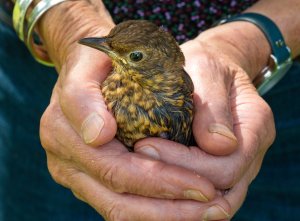 We need to connect and reconnect with our world, over and over. We need to marvel at its wonders and the sheer miracle of it all. We need to join in the song of creation and know ourselves in relationship with our brother sun, sister moon, brothers wind and air, sister water and mother earth – the great Laudato Si’ of St Francis of Assisi.
We need to connect and reconnect with our world, over and over. We need to marvel at its wonders and the sheer miracle of it all. We need to join in the song of creation and know ourselves in relationship with our brother sun, sister moon, brothers wind and air, sister water and mother earth – the great Laudato Si’ of St Francis of Assisi.
“Let me keep my mind on what matters,
which is my work,
which is mostly standing still and learning to be
astonished”.
From Messenger by Mary Oliver.
Amen.
Elizabeth Perry
December 2020
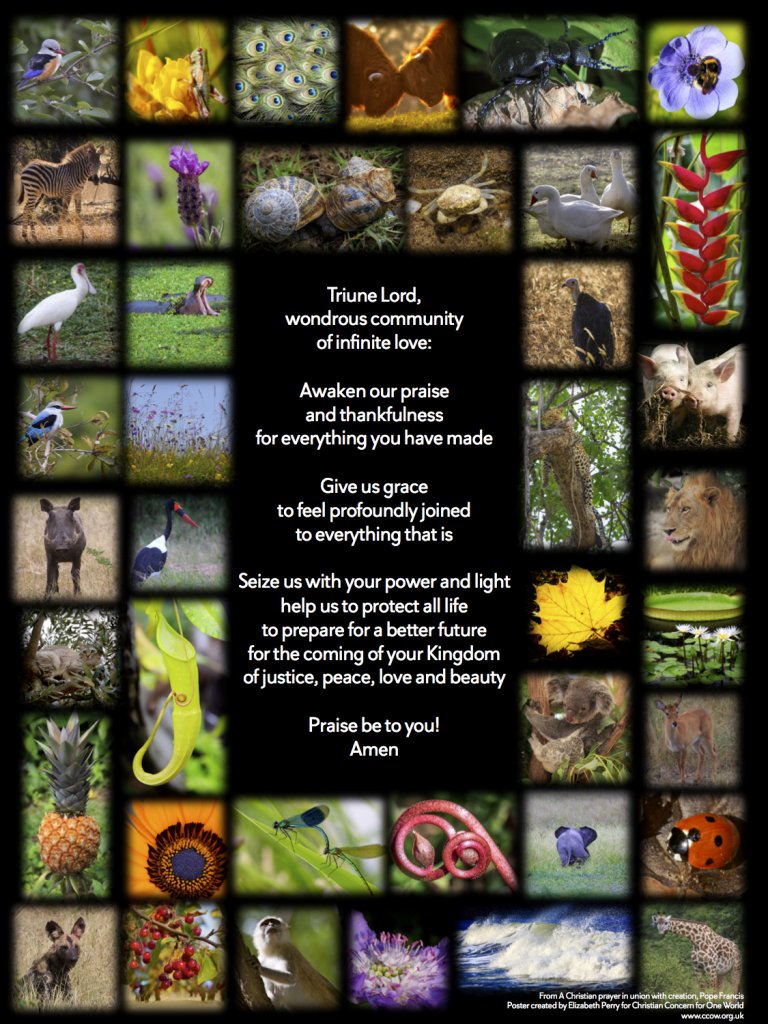
Full transcript of Maori and South Pacific Indigenous Theological Reflection on the Environment
Indigenous Maori and Pacific peoples understand creation is inherently unified. There is a profound connection among all that exists with creation. Maori recognizes relationship as kaitiakitanga. Kaitiakitanga is a taonga (gift or treasure) – a whanaungatanga that exists between humans and the other-than-human world.
At the heart of the term kaitiakitanga is whanaungatanga (kinship) – the interrelatedness of all creatures within all species. Plants and birds, rivers lakes and sea, mountains and hills, animals and insects all have value in themselves and are to be respected and honoured. In this way kaitiakitanga respects the mana (authority) of all living things and seeks to uphold all their mauri (vital essence) with tapu aroha and manaki (sacred love and care).
Mana refers to spiritual power. If a forest, lake or coastal area has mana it will hold an abundance of life and birds and fruit and fish. Kaitiakitanga affirms that respect for the care and harvesting of these resources and enables people to receive from the land and sea in a cycle of mutual reciprocity. Modi literally means the essence of life that exists within every aspect of Creation.
As just one part of the created order, we are called to honour the modi and the mana in all that exists – human and other-than-human. Tamu or tapu refers to the sacred, and in practical terms relates to the ways of ensuring our resources are replenished and restored. This is done through offering aroha (love/compassion) and manaki (care) by following the maramataka (Maori lunar calendar), kore hi ika (quota), kore kai moumou (not wasting food) and having rahui (restriction). Tapu ensures that our relationship with the earth breathes in and out sacredness through our Spirituality.
Our totemic relationship with our mountains, rivers, birds, fish, trees, root crops is integral to our identity as kaitiakitanga. As kaitiaki we are responsible for the sustenance and maintenance of creation.
In this way, the concept of kaitiakitanga positions human beings in creation – not as supreme masters over the earth community but as interdependent members of the earth community. Perceiving ourselves as interdependent members of creation requires us to broaden our gaze beyond our anthropocentric concerns to include consideration of all living entities in everything we do. That asks us to offer aroha and manaki to all other living entities.
Although the indigenous concept of kaitiakitanga certainly predates the arrival of missionaries and western Christianity, there are significant resonances between kaitiakitanga and Christian concepts of relationality within creation. As Christians, we affirm that human existence is intrinsically and inescapably inseparable from God. Life without God is simply impossible. God is the source of our existence – our beginning and our ending. In the same way that our existence is profoundly dependent upon God, so too are we utterly dependent upon the earth and earth’s other-than-human community. The depth of this interconnectedness is seen in Genesis 2, where God creates the human being from earth’s soil and breathes into humanity te ha ora.
It is the very same soil and breath from which God creates the animals and birds. There is whanaungatanga or kinship between these creatures and the human being. They originate from earth’s fertile soil. Earth is their common ancestor and God their creator. It is to the earth our bodily forms will return when our cycle of life is complete. it is in the same text that human beings are instructed to serve and preserve the earth.
We are imaged here as created beings formed from the earth, animated by God and entrusted by God to serve and honour all creation. As interdependent whanau and members of the earth community, we serve – and in turn are served in a reciprocal pattern of mutual custodianship. To serve and honour earth in this way is to recognise and respect the intrinsic worth of all other-than-human life. It is to see creation as God does, and to affirm that that is very good.
And, as we see with the concepts of mana and modi, to recognize the inherent worth of all that exists – human and other-than-human – results in an attitude of restraint that respects each created entity in itself, for itself. This attitude of restraints or rahui calls to mind the sacred set-apart time that is sabbath. As God rests in the sabbath moments, so all creation, human and other-than-human, rests with God.
This consecrated season that is sacred time and space enables healing and restoration for all God’s creation. Breaking the pattern of unfettered progress and unquestioning consumption of earth’s resources, it is a reminder of the imperative for justice – so that all creation might flourish and have abundant life. In a world where relentless ecological degradation and widespread racism deny fullness of life to so, so many, we are called to expose and confront systems that silence, exploit, oppress and abuse. As the sea roars, the mountains tremble, the land moans, the stones cry out and creation groans, so we add our human voices to the cry of the earth community, resisting oppression and demanding justice and restoration. In practical and tangible terms, justice and restoration for Maori and Pacific peoples is realized through rangatiratanga or sovereignty and self-determination. This includes the ability to care for, and protect, God’s creation, exercising kaitiakitanga, ensuring the physical and spiritual well-being of all. At the heart of the term ecology lies the Greek word oikos meaning house, home or household. Ecological well-being is weaved into that well-being of our home, the whole inhabited earth. The flourishing of one is impossible without the flourishing of all. It’s time to get our house back in order!
Indigenous Maori and Pacific peoples understand creation is inherently unified. There is a profound connection among all that exists with creation. Maori recognizes relationship as kaitiakitanga. …At the heart of the term kaitiakitanga is whanaungatanga (kinship) – the interrelatedness of all creatures within all species. Plants and birds, rivers lakes and sea, mountains and hills, animals and insects all have value in themselves and are to be respected and honoured. In this way kaitiakitanga respects the mana (authority) of all living things and seeks to uphold all their mauri (vital essence) with tapu aroha and manaki (sacred love and care). …The concept of kaitiakitanga positions human beings in creation – not as supreme masters over the earth community but as interdependent members of the earth community. Perceiving ourselves as interdependent members of creation requires us to broaden our gaze beyond our anthropocentric concerns to include consideration of all living entities in everything we do.
As Christians, we affirm that human existence is intrinsically and inescapably inseparable from God. Life without God is simply impossible. God is the source of our existence – our beginning and our ending. In the same way that our existence is profoundly dependent upon God, so too are we utterly dependent upon the earth and earth’s other-than-human community. The depth of this interconnectedness is seen in Genesis 2, where God creates the human being from earth’s soil and breathes into humanity te ha ora.
It is the very same soil and breath from which God creates the animals and birds. There is whanaungatanga or kinship between these creatures and the human being. They originate from earth’s fertile soil. Earth is their common ancestor and God their creator. It is to the earth our bodily forms will return when our cycle of life is complete. it is in the same text that human beings are instructed to serve and preserve the earth.
We are imaged here as created beings formed from the earth, animated by God and entrusted by God to serve and honour all creation. As interdependent whanau and members of the earth community, we serve – and in turn are served in a reciprocal pattern of mutual custodianship. To serve and honour earth in this way is to recognise and respect the intrinsic worth of all other-than-human life. It is to see creation as God does, and to affirm that that is very good.
And, as we see with the concepts of mana and modi, to recognize the inherent worth of all that exists – human and other-than-human – results in an attitude of restraint that respects each created entity in itself, for itself. This attitude of restraints or rahui calls to mind the sacred set-apart time that is sabbath. As God rests in the sabbath moments, so all creation, human and other-than-human, rests with God.
This consecrated season that is sacred time and space enables healing and restoration for all God’s creation. Breaking the pattern of unfettered progress and unquestioning consumption of earth’s resources, it is a reminder of the imperative for justice – so that all creation might flourish and have abundant life. In a world where relentless ecological degradation and widespread racism deny fullness of life to so, so many, we are called to expose and confront systems that silence, exploit, oppress and abuse. As the sea roars, the mountains tremble, the land moans, the stones cry out and creation groans, so we add our human voices to the cry of the earth community, resisting oppression and demanding justice and restoration. In practical and tangible terms, justice and restoration for Maori and Pacific peoples is realized through rangatiratanga or sovereignty and self-determination. This includes the ability to care for, and protect, God’s creation, exercising kaitiakitanga, ensuring the physical and spiritual well-being of all. At the heart of the term ecology lies the Greek word oikos meaning house, home or household. Ecological well-being is weaved into that well-being of our home, the whole inhabited earth. The flourishing of one is impossible without the flourishing of all. It’s time to get our house back in order!

